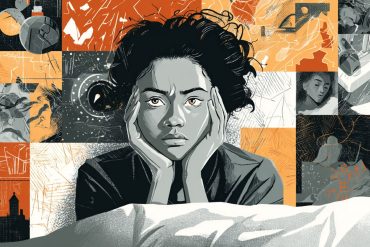The Allen Institute for Brain Science and research partners collaborate to introduce a cost- and time-efficient technology that extends beyond neuroscience to other global experimental areas of biology.
Researchers have pioneered a revolutionary new way to digitally navigate three-dimensional images. The new technology, called Virtual Finger, allows scientists to move through digital images of small structures like neurons and synapses using the flat surface of their computer screens. Virtual Finger’s unique technology makes 3D imaging studies orders of magnitude more efficient, saving time, money and resources at an unprecedented level across many areas of experimental biology. The software and its applications are profiled in this week’s issue of the journal Nature Communications.

Most other image analysis software works by dividing a three-dimensional image into a series of thin slices, each of which can be viewed like a flat image on a computer screen. To study three-dimensional structures, scientists sift through the slices one at a time: a technique that is increasingly challenging with the advent of big data. “Looking through 3D image data one flat slice at a time is simply not efficient, especially when we are dealing with terabytes of data,” explains Hanchuan Peng, Associate Investigator at the Allen Institute for Brain Science. “This is similar to looking through a glass window and seeing objects outside, but not being able to manipulate them because of the physical barrier.”
In sharp contrast, Virtual Finger allows scientists to digitally reach into three-dimensional images of small objects like single cells to access the information they need much more quickly and intuitively. “When you move your cursor along the flat screen of your computer, our software recognizes whether you are pointing to an object that is near, far, or somewhere in between, and allows you to analyze it in depth without having to sift through many two-dimensional images to reach it,” explains Peng.
Scientists at the Allen Institute are already using Virtual Finger to improve their detection of spikes from individual cells, and to better model the morphological structures of neurons. But Virtual Finger promises to be a game-changer for many biological experiments and methods of data analysis, even beyond neuroscience. In their Nature Communications article, the collaborative group of scientists describes how the technology has already been applied to perform three-dimensional microsurgery in order to knock out single cells, study the developing lung, and create a map of all the neural connections in the fly brain.
Virtual Finger
“Using Virtual Finger could make data collection and analysis ten to 100 times faster, depending on the experiment,” says Peng. “The software allows us to navigate large amounts of biological data in the same way that Google Earth allows you to navigate the world. It truly is a revolutionary technology for many different applications within biological science,” says Peng.
Hanchuan Peng began developing Virtual Finger while at the Howard Hughes Medical Institute’s Janelia Research Campus and continued development at the Allen Institute for Brain Science.
Source Hanchuan Peng – Allen Institute for Brain Science
Contact: Allen Institute for Brain Science press release
Image Source: The image is adapted from the Allen Institute for Brain Science press release
Video Source: The video “Virtual Finger” is available at the AllenInstitute YouTube page.
Original Research Full open access research for “Virtual finger boosts three-dimensional imaging and microsurgery as well as terabyte volume image visualization and analysis ” by Hanchuan Peng, Jianyong Tang, Hang Xiao, Alessandro Bria, Jianlong Zhou, Victoria Butler, Zhi Zhou, Paloma T. Gonzalez-Bellido, Seung W. Oh, Jichao Chen, Ananya Mitra, Richard W. Tsien, Hongkui Zeng, Giorgio A. Ascoli, Giulio Iannello, Michael Hawrylycz, Eugene Myers and Fuhui Long in Nature Communications. Published online July 11 2014 doi:10.1038/ncomms5342
Virtual finger boosts three-dimensional imaging and microsurgery as well as terabyte volume image visualization and analysis
Three-dimensional (3D) bioimaging, visualization and data analysis are in strong need of powerful 3D exploration techniques. We develop virtual finger (VF) to generate 3D curves, points and regions-of-interest in the 3D space of a volumetric image with a single finger operation, such as a computer mouse stroke, or click or zoom from the 2D-projection plane of an image as visualized with a computer. VF provides efficient methods for acquisition, visualization and analysis of 3D images for roundworm, fruitfly, dragonfly, mouse, rat and human. Specifically, VF enables instant 3D optical zoom-in imaging, 3D free-form optical microsurgery, and 3D visualization and annotation of terabytes of whole-brain image volumes. VF also leads to orders of magnitude better efficiency of automated 3D reconstruction of neurons and similar biostructures over our previous systems. We use VF to generate from images of 1,107 Drosophila GAL4 lines a projectome of a Drosophila brain.
“Virtual finger boosts three-dimensional imaging and microsurgery as well as terabyte volume image visualization and analysis ” by Hanchuan Peng, Jianyong Tang, Hang Xiao, Alessandro Bria, Jianlong Zhou, Victoria Butler, Zhi Zhou, Paloma T. Gonzalez-Bellido, Seung W. Oh, Jichao Chen, Ananya Mitra, Richard W. Tsien, Hongkui Zeng, Giorgio A. Ascoli, Giulio Iannello, Michael Hawrylycz, Eugene Myers and Fuhui Long in Nature Communications, July 11 2014 doi:10.1038/ncomms5342.







